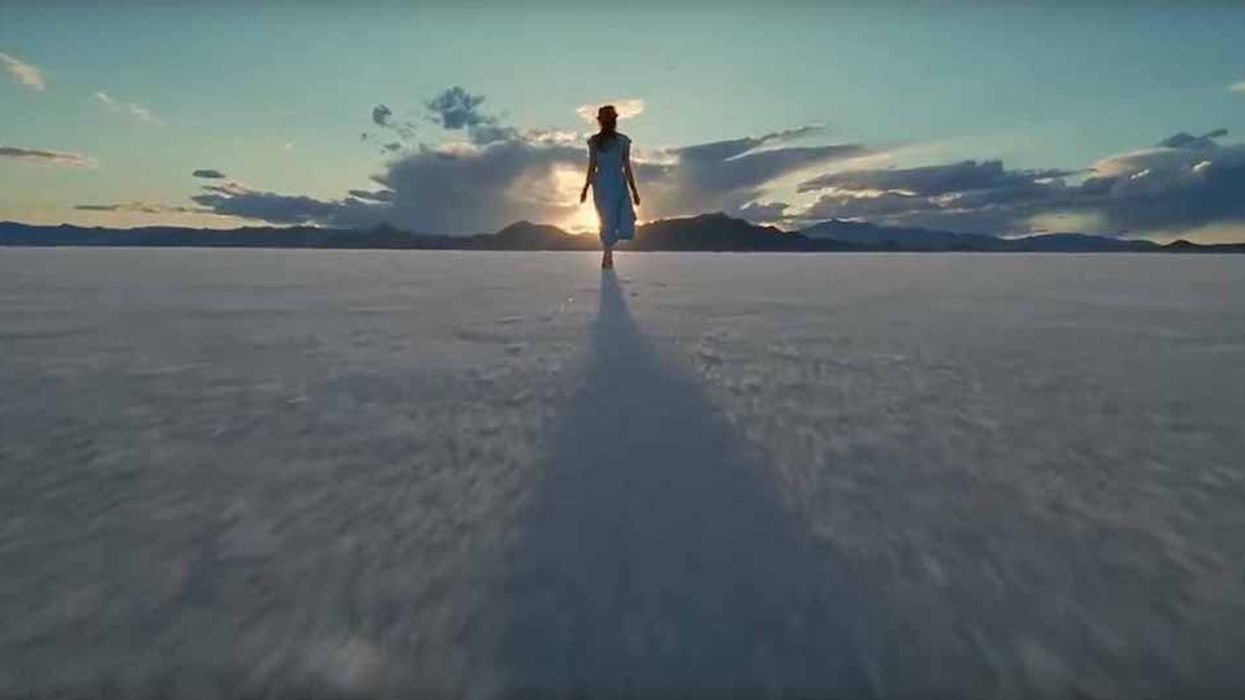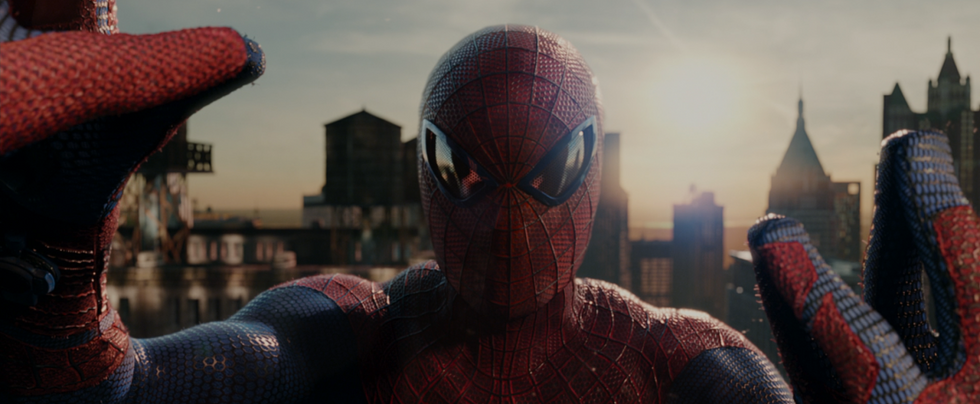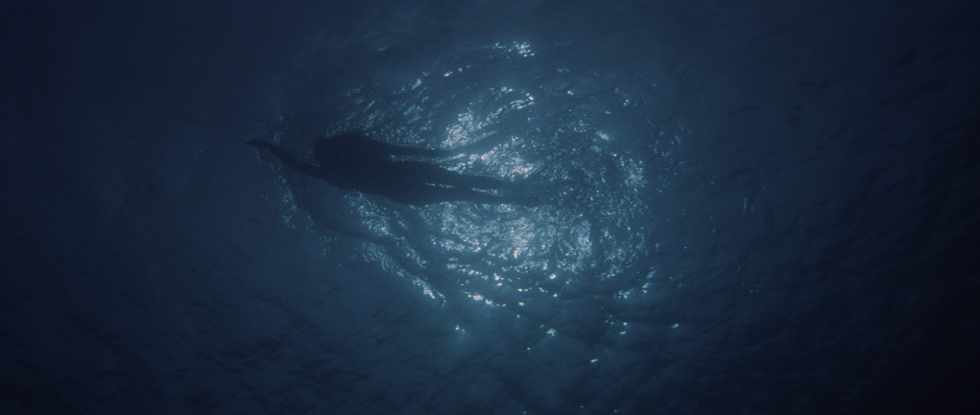4 Essential Visual Tricks to Make Your Shots Easy on the Eyes
Are your shots falling flat? Here are a few fundamentals of composition that will keep them from being boring.

Some say that the "photographer's eye" is something you're born with. Others say it's something you learn through years and years of practice.
I like to believe the latter, because, as I understand it, practice makes perfect. Also, I like to be in charge of myself and my own destiny, including the talents or skills I may want to acquire and utilize during my time on this earth.
So when it comes to becoming a better shooter — composing, lighting, and blocking shots in the best possible service to the story — you don't need to be born with a special skillset or, like, find a cursed amulet in an ancient burial ground that gives you your heart's desire (killer film skillz) in exchange for your immortal soul. All you need is information and practice.
Basic Filmmaker explores some and compositional techniques you can use to make your shots more dynamic and, you know, pretty to look at. Watch the video below and then read on for a breakdown of some essential fundamentals of aesthetics.
The video is framed (excuse the pun) as a challenge to filmmakers to look at the frame more closely and ignore what's outside of it. In other words, the only world that exists is what's shown on your monitor. It's a good exercise in how to look at things like a filmmaker, but there are definitely some methods and techniques used that are worth classifying and diving into.
So, let's do that!
These are some principles that are used in the video that you will most definitely find in any aesthetics textbook.
Perspective
In the first example in the video, making the waterfall scene more dynamic is as simple as "moving the camera," but the principle at work here is changing perspective. You can do this by adjusting the height, angle, tilt, movement, and placement of your camera.
For instance, imagine you're capturing a static (movement) level shot (tilt) of an actor front and center (placement) at their eyeline (height and angle). This is what's known as "neutral framing," because you're communicating very little to your audience about their status, power level, emotions, inner thoughts, or intentions.

Now, if you alter some of your compositional choices, effectively changing your perspective, you can actually tell your audience more about your subject. Here are a few examples.
- If you move your camera using a dolly-in move, you're telling your audience to pay more attention to your subject.
- If you tilt your camera slightly to create a canted or Dutch angle, you're telling your audience that there's something not quite right with your subject (maybe they're drunk, disoriented, or psychotic).
- If you raise the height of your camera and tilt down, you're telling your audience that your subject is insignificant or powerless (you know, because you're literally "looking down" on them).
Size
In aesthetics, there are many ways you can draw your audience's eye to the most important thing in your shot, but perhaps one of the easiest and most accessible is increasing your subject's size.
We see this in the video's example of the flowers. From far away, we don't know what to look at, because everything is pretty much the same size, but moving your camera closer to your subject and making it dominate the frame makes your intention very clear — "Look at this! This is what I want you to look at! It's huge! This is really important, so look at it!"

Color
There are many ways to use color creatively to tell stories, from using it as a representation of a theme or signal of an event, like how red was used inThe Sixth Sense to signal danger or bad things were about to happen/be revealed about bad people. Color can also be used to elicit emotional or psychological responses from your audience, like how pastel pink was used in The Grand Budapest Hotel to represent the young love between Zero and Agatha.
However, it can also be used to bring attention to the most important part of your composition. We see this in the video with the yellow flowers, which are surrounded by lush greenery on all sides. There are tons of examples of this in cinema -- with various applied methods -- like the selective saturation in Sin City, Pleasantville, and Schindler's List, as well as the use of complementary colors in Vertigo: Judy Barton's green dress against the red backdrop of the restaurant, for example.

Motion
Another technique you can use to make your shots more dynamic is camera movement. As aesthetic theories state, something that's moving draws our eyes more and more quickly than something that is stationary. (Blame it on our ancient biology that used to have to look out for killer warthogs and dinos... or whatever... sabertooth tigers. I don't' know history.) So, if you move your camera around your subject, you will not only increase your audience's interest in your composition, you can also highlight your subject depending on the camera move you choose.
For example, if you choose to dolly-in toward your subject, not only is that camera movement going to interest viewers, but you're also making your subject bigger at the same time, and the bigger something is in the frame is going to, let's say it together because we just read about it, draw your audience's attention.
Wrapping-Up
These are just a handful of techniques you can use to make your images more pleasing to the eye, and because I don't have 500 years to dig into all of the awesome aesthetic tools filmmakers have at our disposal. So, let me just leave you with this cute little axiom.
In aesthetics, the entire purpose of using these methods is to increase or decrease "aesthetic energy", which, to explain it in confusing and poetic terms, is the currency with which we pay the audience for their attention. If you want more of your audience's attention, you're gonna have to pay for it with all of these cool cinematic tricks.
Move your camera, use some color, make important stuff big, change your perspective, and use vertices (a.k.a. leading lines) to lead your viewer's eye to what you want them to look at.
Or, don't do that stuff. That's fine, too.
But you'll get what you pay for.
Source: Basic Filmmaker

 'The Amazing Spider-Man' (2012)
'The Amazing Spider-Man' (2012) 'Jaws' (1975)
'Jaws' (1975)









